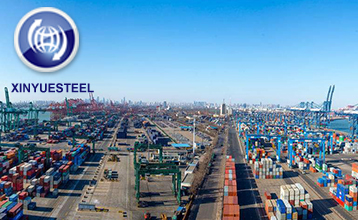Coal prices jump again. How big is the increase?
Apr. 21, 2021
In April, coal prices fell for a week, with a cumulative drop of 18 yuan/ton. Subsequently, it entered an upward channel this week, and it is expected that this round of coal prices will rise to the end of this month. It is conservatively estimated that the price of thermal coal in the Qinhuangdao port market with a calorific value of 5,500 kcal will rise to 800-850 yuan/ton; the implementation of increasing production and increasing transportation and supply in the future is still the key to the trend of coal prices.
1. The global manufacturing industry has recovered and domestic spending has rebounded rapidly. Data such as gross domestic product (GDP), increase in social financing, trade, industrial value added, and total retail sales of consumer goods show that China's economy is recovering steadily. In addition, foreign trade is off to a good start. Foreign trade companies’ orders on hand have improved compared with last year. It is expected that macroeconomic policies will maintain stability and continuity.
2. The environmental protection and safety supervision of the main production area has become stricter. In the near future, with frequent occurrences of safety accidents, local governments and coal companies are bound to put safety in production first; guaranteeing supply is important, and safety supervision is also very important, and it is not easy for domestic coal companies to increase production. After the rebound of coal prices in ports on Tuesday, coal prices in production areas such as Jinbei and Mengxi also rose on Wednesday. In addition, the Inner Mongolia Autonomous Region held a meeting to re-emphasize, redeploy, and advance the special rectification work in the area of coal resources, indicating that the anti-corruption in the coal field has not yet ended, and it has suppressed coal production to a certain extent.

3. The price gap between domestic and foreign coal has narrowed, and the advantage of imported coal is no longer. As Southeast Asia’s economic recovery accelerates, coal demand is strong. International coal prices and freight rates have risen sharply, and the price gap between internal and external coal prices has narrowed. In certain periods, coal prices have even turned upside down, resulting in a low cost of terminal purchases of imported coal and a decline in enthusiasm. Under this circumstance, imported coal will not only suppress the domestic coal market, but also support domestic coal prices to remain firm to a certain extent.
4. The terminal inventory is not high, and it needs to be restocked. As of April 7, the country’s key power plants had stored 55.3 million tons of coal, a decrease of nearly 20 million tons from the same period last year, and a decrease of 11 million tons from the lowest point in the winter on January 13. From the data analysis, after the Spring Festival, power plants have been eating inventory. The power plants in the eight coastal provinces have a total of 22.62 million tons of coal, with a daily consumption of 1.808 million tons. Although the daily consumption has declined slightly, it is still at a high level, with only 12.5 days available for coal storage. At present, summer is approaching. Once the hydropower operation is unstable and the thermal power increases, the Southern Power Plant will face greater pressure to replenish the reservoir.
5. Port inventory is declining. At present, the 10 ports around the Bohai Sea have a total of 24.64 million tons of coal, a decrease of 1.3 million tons from the beginning of the month. Considering that the Daqin line is undergoing an overhaul period and will continue until the end of the month. This month, the amount of coal transferred from Bohai Rim ports has decreased, and once more ships arrive at the port, the Bohai Rim inventory will continue to go to the warehouse. At present, Jiangnei stocks are 4.29 million tons, a decrease of 1.85 million tons from the same period last year.
The impact of mining disasters in Guizhou and Xinjiang on 4.9 and 4.10 have been magnified. As the safety and environmental inspections of production areas tend to be normalized, coal prices are likely to rise but never fall in the short term.



